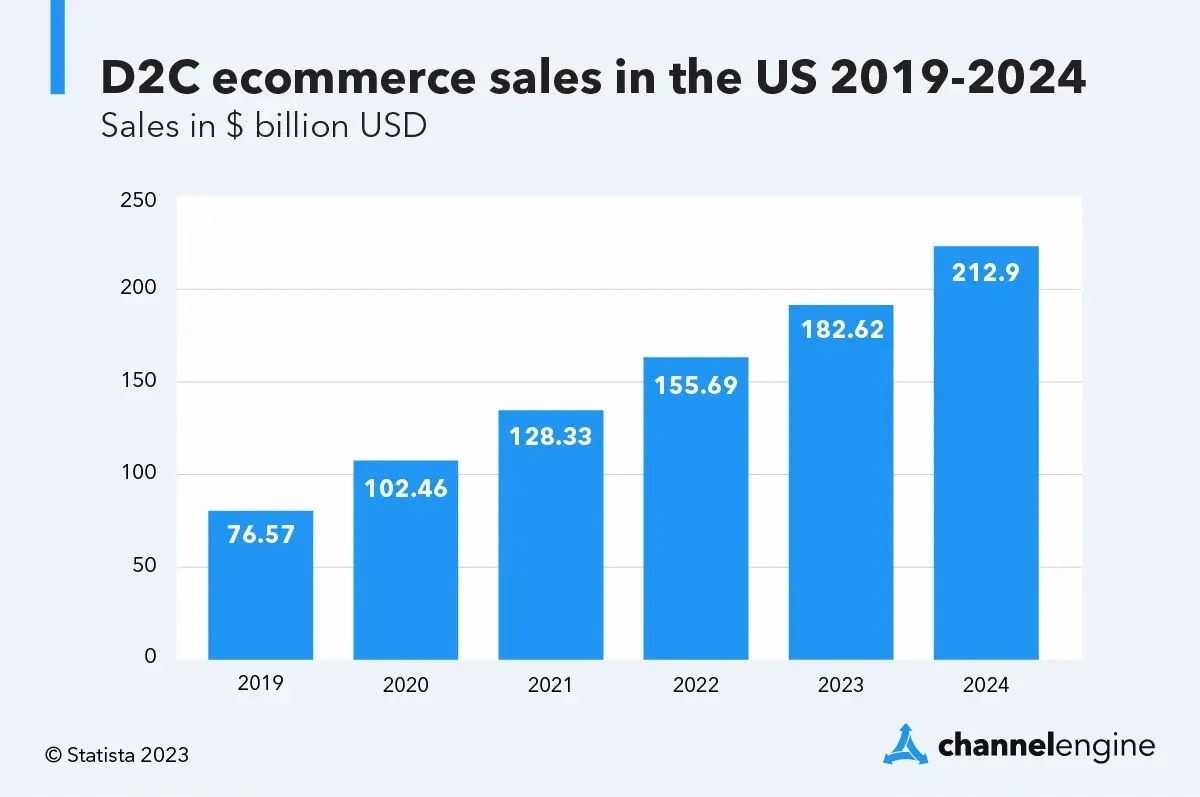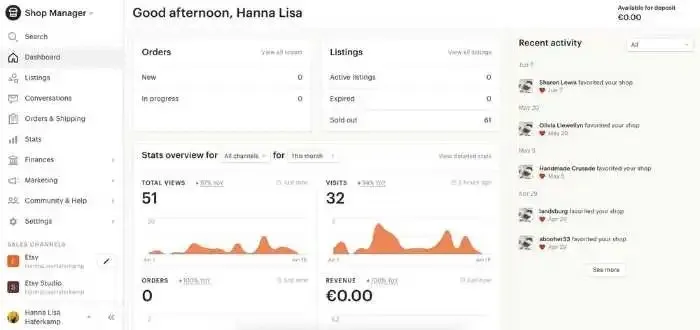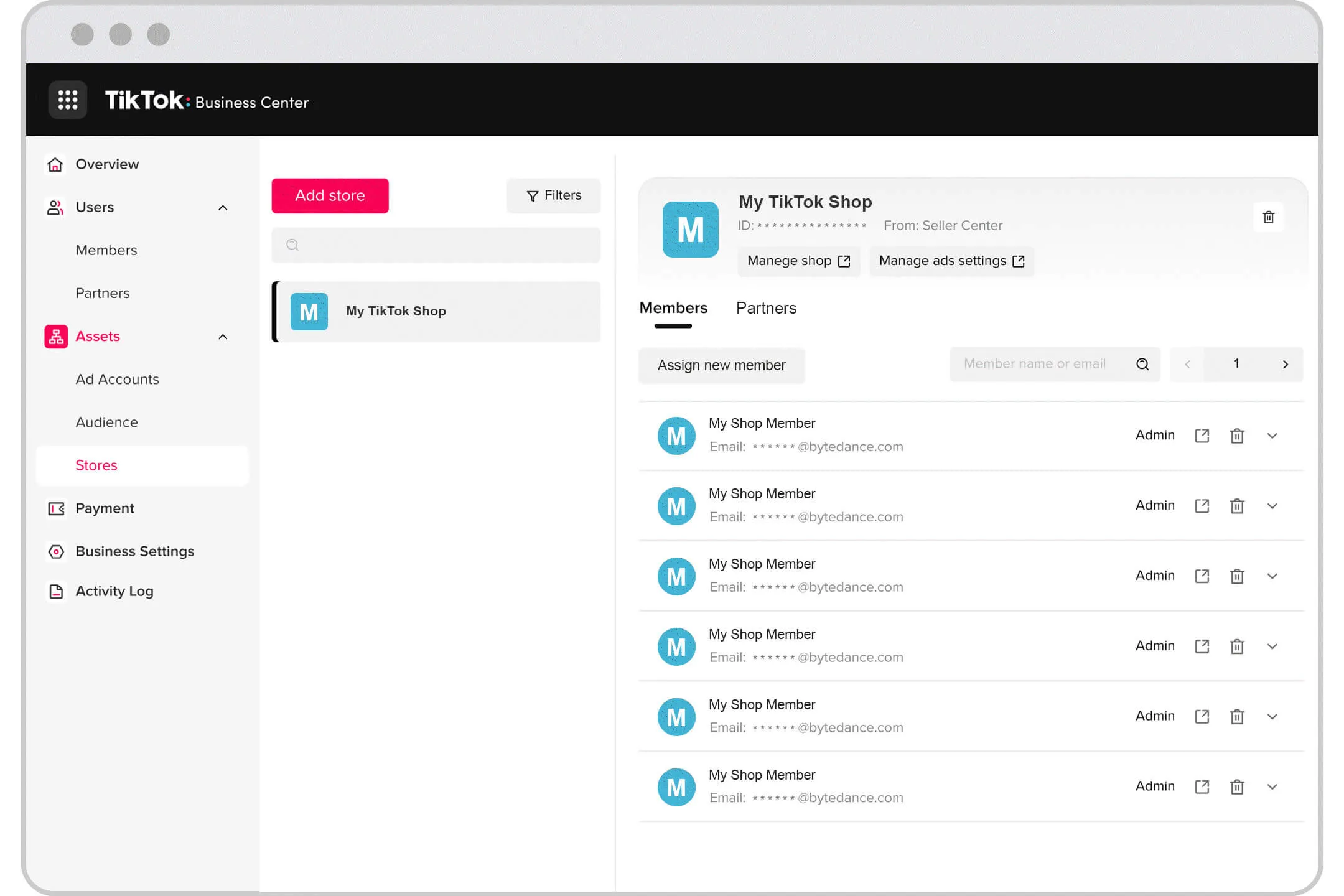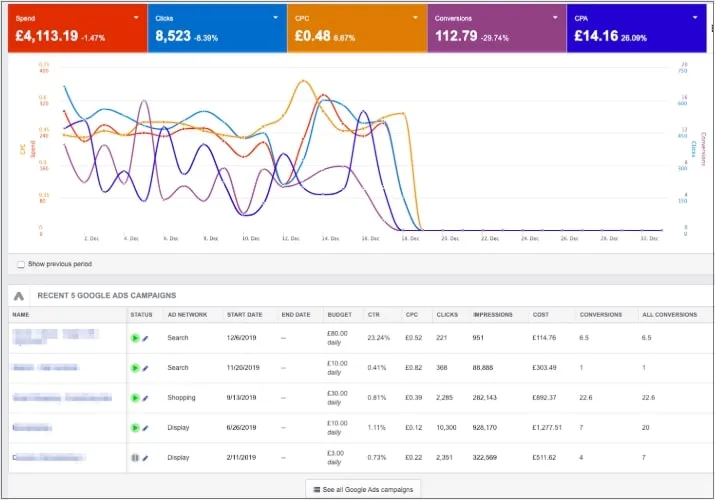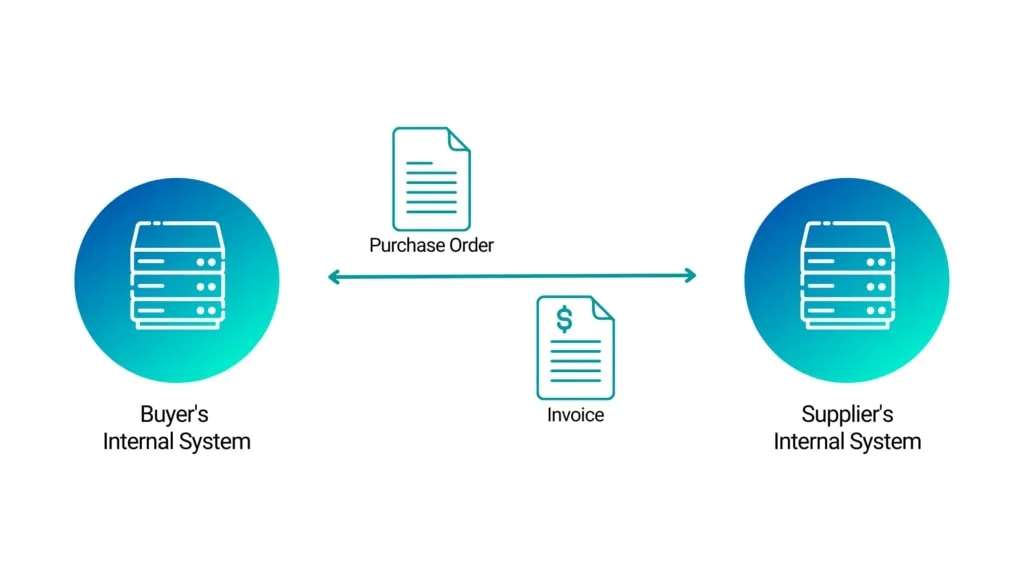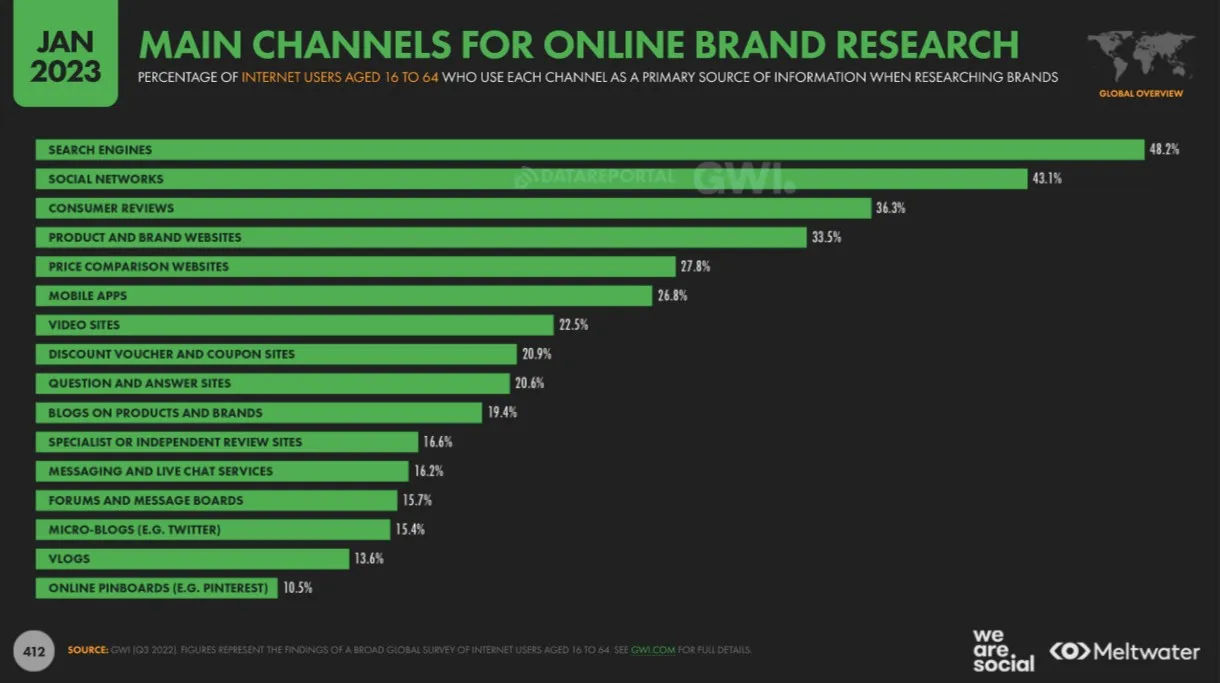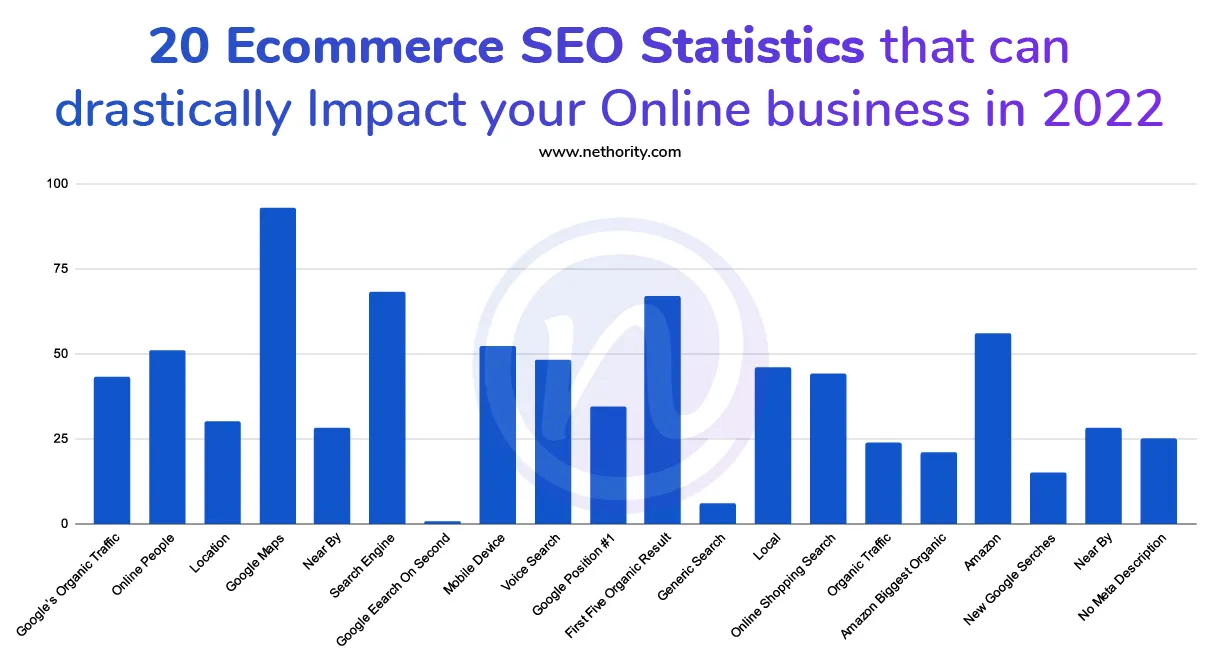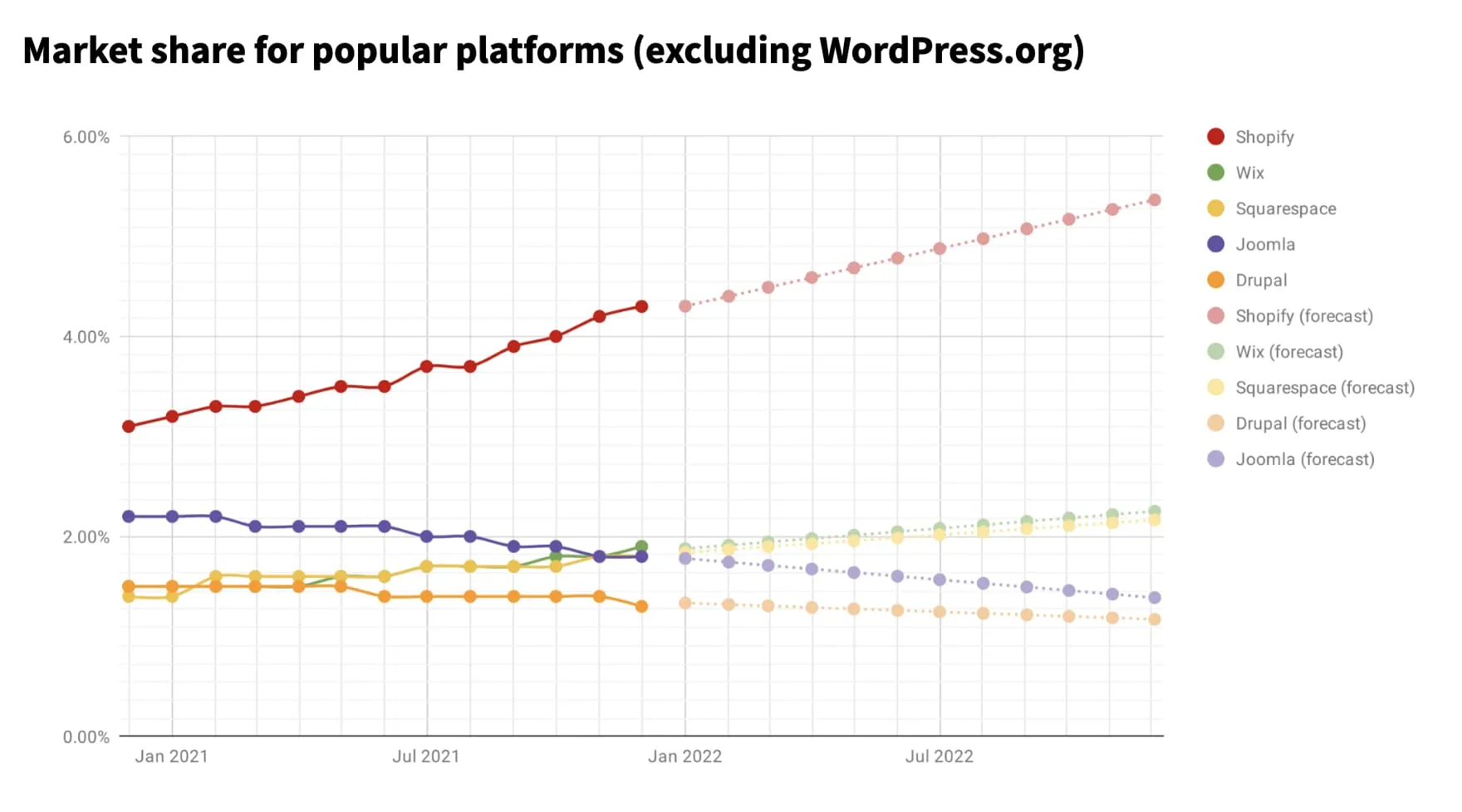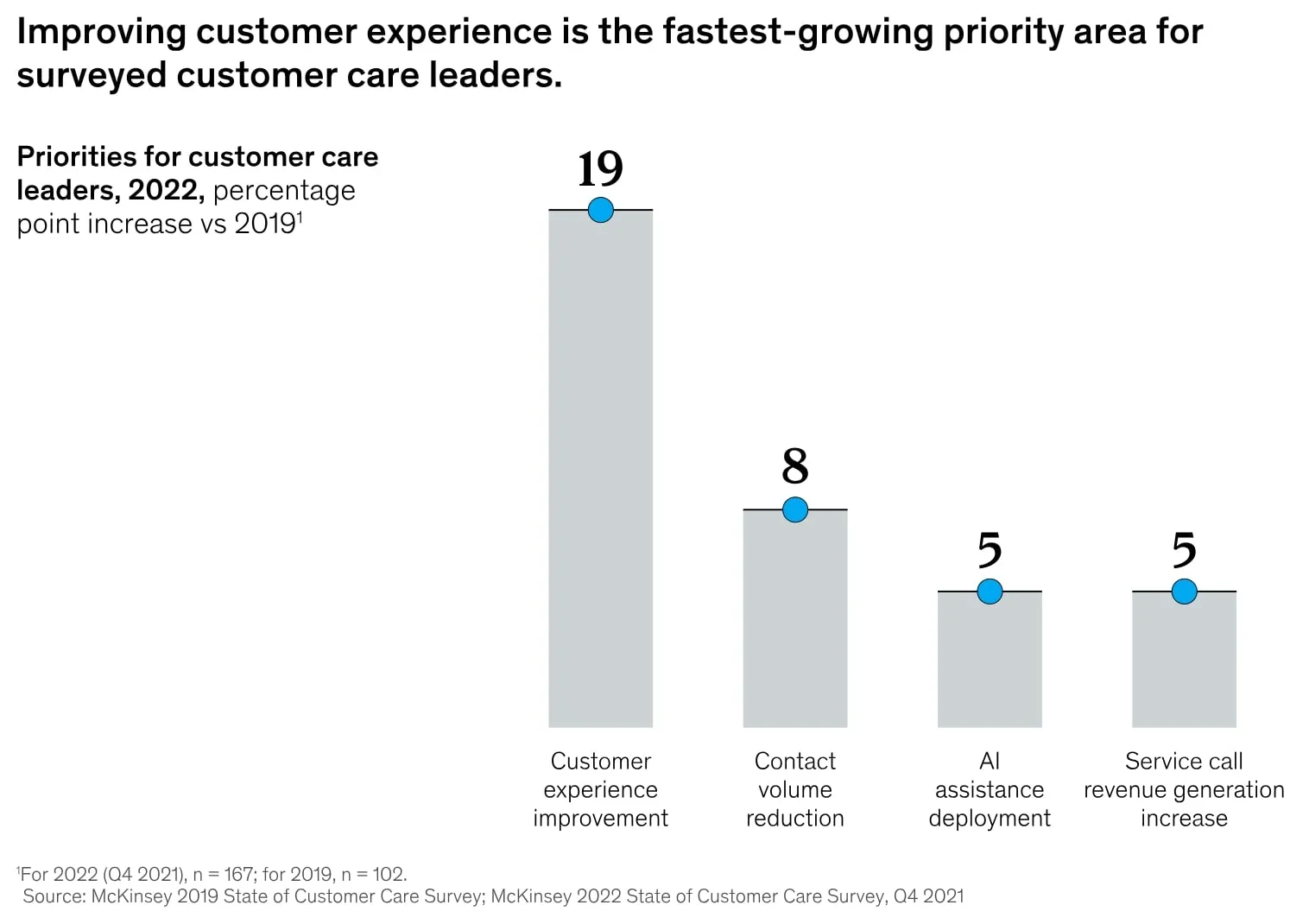7 eCommerce Channels for Multichannel Selling 2026
Do you sell products online? Choosing the right marketing channels and selling platforms can help you increase sales, and strengthen your brand. Read on!
Updated November 6, 2024

If you want to open an eCommerce business and reach online shoppers as quickly and as efficiently as possible, there's a wide range of options for eCommerce channels – to the point where it gets confusing.
Given that there are a lot of digital marketing channels for promotion, as well, it's easy to get lost even further in terms like affiliate marketing, social media marketing, event marketing, and more.
What's up with all the eCommerce platforms, which ones help you reach prospective customers the easiest and most profitably? And which of the types of marketing channels should you use to make sure your marketing messaging is conveyed as clearly as possible?
Keep reading and find out more.
(Source)
What are eCommerce channels?
eCommerce channels can refer to either of two things: selling channels (how business owners sell their products online) or marketing channels (where business owners promote their products online).
For this article, we'll take a look at both.
Direct vs indirect eCommerce sales channels
Broadly, the two main types of eCommerce sales channels are direct and indirect.
Direct sales channels are owned by the business. These include its website, mobile app, or physical store. Indirect sales channels refer to third-party platforms where businesses sell their products to customers, such as marketplaces (Amazon, eBay, etc.), social media platforms (Facebook, Instagram), or affiliate websites.
Advantages of direct eCommerce sales channels
Direct eCommerce sales channels come with a lot of advantages. Some of the most important ones include:
- Control over the customer experience: When you sell on your website or app, you have complete control over how your products are presented and how customers interact with them. This allows you to create a more personalized and seamless shopping experience for your customers.
- Higher profit margins: As a business owner, selling directly means cutting out any middlemen fees that come with using third-party platforms. This ultimately results in higher profit margins for your business.
- Data and customer insights: With direct channels, you have complete access to all data collected from your customers' interactions with your products. These valuable insights help improve your marketing strategies and product offerings.
Disadvantages of direct eCommerce sales channels
While direct eCommerce sales channels offer numerous benefits, they also come with certain drawbacks that need to be carefully considered.
- Higher setup and maintenance costs: Setting up and maintaining your website or app can be expensive and time-consuming. You will need to invest in web development, hosting services, security measures, and more.
- Marketing challenges: Without the built-in customer base that comes with using third-party platforms, businesses selling directly may face marketing challenges when trying to attract new customers.
- Limited reach: Unlike third-party platforms, your website or app may not have the same level of traffic and visibility. This can limit your reach and potential customer base.
Advantages of indirect eCommerce sales channels
Selling through indirect eCommerce channels has its advantages, too.
- Established customer base: By using popular marketplaces or social media platforms, businesses can tap into their existing and loyal customer base. This can help increase sales without the need for extensive marketing efforts.
- Wider reach: With indirect channels, you have access to a larger audience that may not have come across your products otherwise. This can help increase brand awareness and potential customers.
- Lower setup costs: Unlike direct channels, using third-party platforms often comes with lower setup and maintenance costs. This can be beneficial for small businesses with limited resources.
Disadvantages of indirect eCommerce sales channels
The main disadvantages that come with using indirect sales channels are
- Less control over the customer experience: When selling through third-party platforms, businesses have limited control over how their products are presented and how customers interact with them. This can result in a less personalized shopping experience.
- Higher competition: With so many businesses selling on popular marketplaces and social media platforms, there is often higher competition for customer attention and sales.
- Fees and restrictions: Using third-party platforms also means adhering to their rules and regulations, which may include fees for each sale or certain restrictions on product listings.
Types of eCommerce channels for selling
There are seven main types of eCommerce channels you can use:
eCommerce platforms
eCommerce platforms are software applications that enable online businesses to manage their website, marketing, sales, and operations. Examples include Shopify, Magento, and WooCommerce. These platforms serve as the foundation upon which a business can build and customize its online store.
(Source)
Advantages of eCommerce platforms
- Customizability: Businesses can tailor the shopping experience to their needs and brand identity, which can translate into a unique customer experience.
- Scalability: As businesses grow, these platforms can scale to handle increased traffic and sales without compromising performance.
- Integrated features: Most platforms come with a variety of features such as payment processing, inventory management, and customer service tools.
Disadvantages of eCommerce platforms
- Cost: There could be a significant upfront investment for setting up the store and ongoing subscription or transaction fees.
- Complexity: Some technical know-how might be required to set up and customize these platforms, possibly necessitating hiring developers or technical staff.
- Dependency: Businesses may become dependent on the service provider for updates and support, which could impact store operations.
Marketplaces
Marketplaces are online platforms where multiple merchants can sell their goods or services to consumers. Examples of such marketplaces include Amazon, Etsy, and Alibaba. These platforms offer a space where buyers can browse a vast selection of product categories from a variety of sellers, all in one place.
(Etsy store dashboard, Source)
Advantages of selling on marketplaces
- Broad visibility: Products listed on these platforms are exposed to a large, diverse audience, which can dramatically increase reach and potential sales.
- Trust factor: Established marketplaces have built-in trust with consumers, which can transfer to your brand, reducing the barrier to purchase.
- Ease of use: Most marketplaces simplify the selling process by handling payments and sometimes even shipping, making it easier for sellers to manage transactions.
Disadvantages of selling on marketplaces
- Fees: Selling fees, listing fees, and potential commission cuts can reduce profit margins.
- Brand dilution: It's challenging to build your own brand identity when your products are listed amongst competitors.
- Lesser control: Sellers are often subjected to the platform's rules, regulations, and changes, impacting sales and the seller's autonomy.
Social and live streaming commerce
Social and live streaming commerce harness the power of social media platforms and live video broadcasts to sell products and interact with customers in real-time. Notable examples include Facebook Live, Instagram Shopping, and TikTok's For You Page, where brands leverage the platforms' features for showcasing products and facilitating instant purchases.
Advantages of social and live streaming commerce
- Enhanced engagement: Real-time interaction with the audience can build stronger relationships and drive immediate sales.
- Leverage influencer partnerships: Collaborating with influencers can tap into their follower base, increasing visibility and credibility.
- Social proof and urgency: Watching peers engage and purchase during live streams can encourage viewers to act quickly, leveraging social proof and a sense of urgency.
Disadvantages of social and live streaming commerce
- Dependence on platform algorithms: Visibility greatly depends on the whims of social platform algorithms, which can change without notice.
- Potential for technical issues: Live streaming is prone to technical glitches that can disrupt the shopping experience.
- Intense competition: With many brands vying for attention, standing out among the crowd can be a significant challenge.
Comparison shopping sites
Comparison shopping sites are websites that aggregate product listings from various merchants to allow consumers to compare prices, features, and reviews in one location. Examples include Google Shopping, Shopzilla, and PriceGrabber. These platforms facilitate informed purchasing decisions by providing a centralized comparison service.
(Source)
Advantages of comparison shopping sites
- Increased exposure: Products are seen by shoppers who are actively looking to compare and make a purchase, leading to high-intent traffic.
- Cost-effectiveness: Typically, these sites operate on a pay-per-click model, meaning you only pay when a potential customer shows interest in your product.
- Consumer trust: Shoppers trust these platforms to provide unbiased information, which in turn can increase the credibility of your listings.
Disadvantages of comparison shopping sites
- Price wars: Being compared directly with competitors can lead to aggressive pricing strategies, which may erode profit margins.
- Lesser brand loyalty: Shoppers on comparison sites may be more focused on price and less on brand, making it harder to build brand loyalty.
- Complex management: Managing product feeds and pricing across multiple comparison sites can be complex and time-consuming.
Mobile apps
Mobile apps are software applications specifically designed to run on smartphones, tablets, and other mobile devices. They offer businesses a direct channel to reach customers and facilitate transactions or services through user-friendly interfaces.
It is worth mentioning mobile apps rarely work as a standalone eCommerce channel. They are mostly used as digital marketing channels for stores on existing websites because an app allows you to send notifications. This makes it more likely that customers will see your special offers – and, more importantly, act on them!
Advantages of mobile apps
- Personalized user experience: Mobile apps can offer personalized recommendations and experiences based on user data and preferences.
- Increased customer loyalty: Through features like push notifications and loyalty rewards, mobile apps can help increase customer retention.
- Enhanced accessibility: Apps provide customers with the convenience of shopping or accessing services from anywhere at any time.
- Offline functionality: Unlike websites, apps can offer certain features even when the user is offline, relying on the device's native capabilities.
Disadvantages of mobile apps
- Development costs: Creating a mobile app can be expensive, requiring investment in developers and ongoing maintenance costs.
- App store approval: Apps must undergo app store approval, which can result in certain restrictions that delay the availability of the app to users.
- User adoption: Encouraging customers to download and regularly use the app can be a significant hurdle, especially with the multitude of apps available.
- Update rollouts: Keeping the app up-to-date requires users to install updates, which they might neglect, leading to inconsistency in user experiences.
Electronic data interchange (EDI)
Electronic data interchange (EDI) refers to the structured transmission of data between organizations by electronic means. It is used to transfer electronic documents or business data from one computer system to another, often with no human intervention.
EDI is a critical technology for companies that require the quick, secure, and accurate exchange of vital business information. Examples of EDI transactions include purchase orders, invoices, and shipping notices.
(Source)
Advantages of electronic data interchange (EDI)
- Speed and efficiency: EDI greatly reduces processing time by automating document transfer, allowing for near-instantaneous transactions.
- Accuracy and reduced errors: Since EDI eliminates the need for manual data entry, the likelihood of errors is significantly reduced.
- Cost savings: By automating the data exchange processes, businesses can save on labor, postage, and paper costs.
- Improved business relationships: Faster transactions and accuracy can lead to stronger relationships with trading partners.
- Enhanced security: EDI provides secure data transmission, ensuring the confidentiality and integrity of business information.
Disadvantages of electronic data interchange (EDI)
- Initial setup cost: The upfront costs for implementing an EDI system can be high due to software, hardware, and training requirements.
- Complexity: Setting up and maintaining an EDI system can be complex and often requires specialized expertise.
- Inflexibility: EDI systems can be rigid, making it difficult to accommodate specific needs or changes from business partners without significant work.
White label websites
White label websites are websites created by a company to be rebranded and sold to another business. They allow the purchasing company to present the product as their own and usually come without branding, so the customer can apply their own brand identity. Common examples include website builders that offer white-label solutions for agencies to sell websites under their brands, and online store platforms that allow businesses to sell products under a private label.
Advantages of white label websites
- Brand customization: Businesses can apply their own brand identity to the website, making it appear as if they developed it themselves.
- Speed to market: White label solutions allow companies to quickly launch products or services without the need to develop them from scratch.
- Cost-effectiveness: Reduces development and research costs by leveraging an existing platform's technology and infrastructure.
- Focus on core business: Companies can focus on their core competencies, such as marketing and customer service, rather than on technical development.
Disadvantages of white label websites
- Limited control: Because the underlying product is not developed in-house, businesses may have limited control over the features and functionality.
- Dependency on the provider: The business’s success is partially tied to the reliability and performance of the white label provider.
- Market saturation: If the white label product is popular, the market may become saturated, making it harder to differentiate offerings.
Multichannel selling: should you do it?
Multichannel selling is ideal for businesses looking to reach a wider audience and increase their sales. It refers to the practice of selling products or services through multiple online and offline channels, such as e-commerce websites, social media platforms, marketplaces like Amazon, and physical retail locations.
While multichannel selling offers many potential benefits, there are also certain challenges that businesses should consider before deciding to pursue this approach. For instance, you need a solid understanding of each channel's unique requirements and how to effectively manage inventory, orders, and customer data across all channels.
Additionally, multichannel selling can come with increased costs and complexity, as you may need to invest in different technologies and tools for each channel.
Ultimately, the decision to pursue multichannel selling should be based on your business goals and capabilities. It may be a beneficial strategy to expand your reach and increase sales, sure – but it requires careful planning and execution to be successful.
Best marketing channels for eCommerce business
Unlike eCommerce channels, marketing channels for eCommerce are not where you sell the products, but how you promote them. You can use any of the following marketing channels and redirect customers to your website, social page, or wherever you choose to set up the HQ for your store.
(Source)
Pay per click advertising
The pay per click (PPC) advertising model is where businesses pay a fee each time their ad is clicked. It's a method of buying visits to your site, rather than attempting to earn those visits organically. Search engine advertising is one of the most popular forms of PPC. It allows advertisers to bid for ad placement in a search engine's sponsored links when someone searches for a keyword that is related to their business offering.
Programmatic advertising
Programmatic advertising refers to the automated buying and selling of online advertisement space, which utilizes data and algorithms to deliver ads to the right audience at the optimal moment. This method offers high efficiency and targeting accuracy, ensuring that marketing efforts resonate more effectively with potential customers. Programmatic advertising provides real-time insights and flexibility, allowing businesses to adjust campaigns instantaneously based on performance metrics.
Banner advertising
Banner advertising, also known as display advertising, involves placing visual ads on websites to direct traffic to the advertiser’s site. These banner ads can appear in various formats and sizes, typically using compelling imagery or animations to capture the attention of web users. They can be targeted to specific audiences and are priced in various ways, often through PPC or impression-based costing. Google Display Network, Facebook Ads, and Instagram Ads are examples of popular banner advertising platforms.
Retargeting advertising
Retargeting advertising is a digital marketing strategy that targets users who have previously visited your website with tailored ads to draw them back, aiming to convert them into customers. It leverages cookies to follow users across the web and serve them relevant ads on various platforms. This method is effective in enhancing brand recall and increasing conversion rates as it focuses on an audience already familiar with the business’s products or services.
(Source)
Email marketing
Email marketing is a highly strategic communication practice that involves sending emails to prospects and customers. Effective email marketing can convert prospects into customers and turn one-time buyers into loyal, raving fans. This channel is widely recognized for delivering one of the highest returns on investment (ROI) among marketing strategies when executed with a well-segmented audience and personalized messaging.
SMS marketing
SMS marketing, or text message marketing, is a technique that uses permission-based text messaging to spread promotional messages. It's highly effective for timely and direct communication with customers, offering a staggering open rate compared to email. With SMS, businesses can send coupons, special deals, announcements, and reminders directly to customer's mobile phones. This sense of urgency is powerful for driving action from recipients, particularly for time-sensitive offers.
Content marketing
Content marketing is a strategic marketing approach focused on creating and distributing valuable, relevant, and consistent content. The goal here is to attract and retain a clearly defined audience and drive profitable customer action. It goes beyond mere advertising to provide information or experiences that are meaningful to users, with the long-term goal of cultivating a loyal customer base. This approach includes various formats such as blogs, videos, e-books, infographics, and podcasts, each chosen based on the target audience's preferences and engagement patterns.
Social media marketing
Social media marketing harnesses the power of social platforms to promote products or services, engage with potential customers, and enhance brand visibility. It's a multifaceted tool allowing for targeted campaigns, real-time feedback, and direct customer interaction. Effective strategies often involve a mix of organic and paid content, influencer partnerships, and constant community engagement to foster brand loyalty and drive sales.
Search engine optimization (SEO)
Search engine optimization, or SEO, involves optimizing your website to rank higher in search engine results pages, making your business more visible to those who are searching for your products or services. SEO is generally considered the most cost-effective marketing channel. Unlike paid advertising, it can provide sustained organic traffic without the need for continuous financial input, making it the cheapest option in the long term.
(Source)
Influencer marketing
Influencer marketing taps into the clout of individuals with a significant following on social media or other online platforms. By partnering with social media influencers, brands can leverage their credibility and reach to promote products in an authentic and engaging way. It is particularly effective for targeting specific demographics and niches, creating a sense of trust through personal endorsements.
Affiliate marketing
Affiliate marketing is a performance-based approach where external partners are rewarded for directing traffic or sales to a business via their marketing efforts. Typically, affiliate networks earn a commission for promoting a company's products or services on their platforms, such as websites, blogs, or social media channels. This almost-symbiotic relationship allows companies to broaden their reach, while affiliates benefit from monetizing their audience and content.
Referral marketing
Referral marketing capitalizes on word-of-mouth and personal recommendations to drive sales. Satisfied customers are encouraged to refer friends and family, often incentivized with discounts or perks. This strategy can significantly amplify brand reach and credibility since people tend to trust personal referrals more than traditional advertising.
Partnership marketing
Partnership marketing is a strategic alliance where two or more companies collaborate on a particular project or campaign, leveraging each other's strengths to achieve mutual benefits. This approach often results in shared resources, expanded customer base, and increased brand exposure. Co-branding, sponsorships, and joint product releases are common forms of partnership marketing.
PR (Public relations)
PR activities are designed to promote and protect a company's image or individual's reputation in the public eye. Unlike other marketing methods, PR focuses on relationships and strategic communication to build a positive perception among various stakeholders, including the media, investors, partners, and customers.
Remember, there's no right or wrong channel for marketing an eCommerce business. Social networks might work for some, while for others it might be good, old-fashioned advertising on TV, radio, or YouTube. For others still, it could be an SEO strategy, or it could be a good channel mix. Whatever it is, remember that they should tap into your ideal audience's shopping journey and help you build solid customer relationships.
Pro tip: Want to make the most out of your online store's marketing efforts? Hire an eCommerce freelancer vetted by Mayple and make your life easier, and your business more efficient.
How to choose the right eCommerce channel for your business?
Now that you have a deeper understanding of different eCommerce channels, how do you decide which one is best for your business? Here are a few criteria to help you make an informed decision:
Type of product
Some eCommerce channels are better suited for certain types of products. For example, if you sell physical products that require shipping, and you're just starting, an eCommerce marketplace like Amazon or eBay would be a good option. However, if you offer digital products like e-books or software, your own website with a payment gateway might be more appropriate.
Your business model
In some situations, your business model more or less dictates the type of channel you will choose to sell through. For instance, if you run a drop-shipping business, partnering with an eCommerce platform like Shopify or WooCommerce would be the most logical choice. Similarly, if you run a DTC eCommerce business, you might want to rely on your website, rather than sell through Instagram, an online marketplace, or a retail business.
(Source)
Target audience
Different eCommerce channels attract different demographics and audiences. For example, Instagram is predominantly used by younger generations, while Facebook has a more diverse user base. Understanding your target audience and their shopping habits can help you choose the most effective channel to reach them.
Your market & competitors
What are other people in your market doing? How is it working out for them? Do you think you'd have an advantage if you used a different channel than them? It's important to research your competitors and industry trends to see which channels are most popular or successful in your market.
Profitability
Let's face it: you could be your number one fan, and you could believe in your product(s) with ardor, but if you're not making a profit, your business simply won't survive. Luckily, different eCommerce channels have different fee structures and costs associated with selling on their platforms. Do your research to determine which channel would be the most profitable for your business.
Scalability
As your business grows, you'll want to ensure that your eCommerce channel can keep up with demand. Some channels might be more suitable for small businesses, while others offer more scalability as you expand your inventory and customer base. Consider the future growth potential of each channel before making a decision.
Customer support & technical requirements
Launching and running an eCommerce business can be challenging, especially if you're not tech-savvy. Some channels provide better customer support and user-friendly interfaces than others, which may be important factors for businesses with limited resources or expertise.
(Source)
Pro tip: need more help scaling your eCommerce shop? Hire one of our top eCommerce experts today!
Keep it realistic
No matter what eCommerce channel you choose, it won't work like magic.
Each channel has its own set of pros and cons, and success ultimately boils down to how well you execute your strategy. Accept that some may be more expensive, others not. Some might take longer to set up, others require more work in terms of fulfillment and customer support.
And most importantly, accept that once you make a decision, stick to it, at least for some time as your business grows further.
Changing platforms every six months is not only time-consuming, but also costly and it can make you lose focus of what matters: offering a great experience and great products to your buyers, building your long-term relationship with them, and driving sales.
Looking for an eCommerce consultant to help you get your business off the ground and deliver excellence for your customers? Search no more. Contact Mayple and let us match you with the best eCommerce consultant for your niche!
